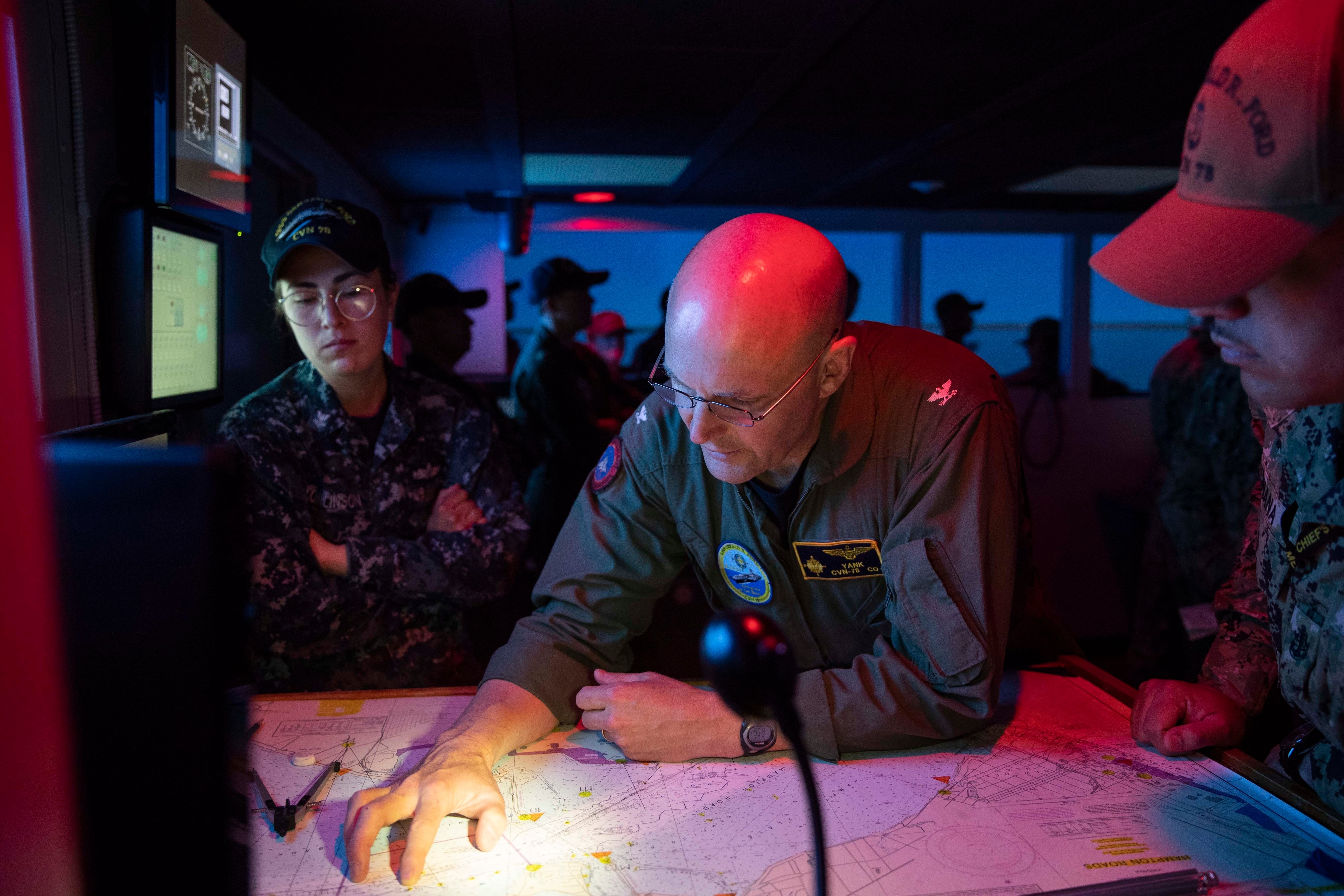WASHINGTON — It has been nearly four years since one of the worst years in modern U.S. Navy history, when a string of accidents and collisions sidelined three ships and resulted in the deaths of 17 sailors. But the service’s top surface warfare officer wants to make clear that it hasn’t moved on.
In 2017, the destroyers Fitzgerald and John S. McCain endured deadly collisions in Asia, leading many to wonder if the Navy had lost sight of basic ship-handling competency under the crushing weight of operational demands from U.S. Pacific Command. Assessments in the wake of those accidents showed some troubling ship-handling shortfalls among junior officers.
Also that year, the cruiser Antietam ran aground outside of Fleet Activity Yokosuka, causing more than a thousand gallons of hydraulic fluid to leak into Tokyo Bay.
In his address this week at the annual Surface Navy Association symposium, top surface warfare officer Vice Adm. Roy Kitchener told a virtual audience that the surface community is increasingly relying on simulators to give officers and sailors alike the chance to keep their skills sharp, even if they are unable to get underway.
RELATED

The emphasis on simulators became a heavy focus of the surface fleet after the twin collisions in the U.S. 7th Fleet, and is expanding to more areas in the fleet, Kitchener said, and will unveil two new facilities this summer.
“Mariner Skills Training Centers are under construction in San Diego, [California], and Norfolk, [Virginia], and this coming July will mark the dual launch of the new office of the deck course at these facilities,” Kitchener said.
The idea is to have instructors prepare new surface warfare officers for complex ship-handling problems before they join the fleet. The new course in San Diego and Norfolk will be a two-phase, nine-week process that will replace and expand on an existing “Junior Officer of the Deck” course given to all perspective surface warfare officers stood up in the wake of the collisions. More than 1,500 surface warfare officers have been through that course, Kitchener said.
Additionally, the fleet is fielding more simulators in more places for watch standers on both the bridge and in the combat information center — where all the ship’s radar and sensor data is displayed — to practice together. On the Fitzgerald, investigators found there was virtually no coordination between the CIC and bridge watch standers, a contributing factor in the tragedy.
“We’re delivering this capability beyond our normal East/West Coast centric model. The Mayport, [Florida], integrated simulator will be up and running this coming summer, Sasebo, [Japan], by the end of 2021. And we’re working to get them in Yokosuka, [Japan], Pearl Harbor, [Hawaii], Everett, [Washington], and Rota, [Spain], before the end of fiscal year 2022,” Kitchener said.
“Our goal is for every crew, not just the ones already operating at sea, to have a reliable place to solidify their mariner skills as a team, rehearsing and realistic scenarios until they perform like an orchestra, perfectly in tune.”
The Navy is also pushing hard on simulators for combat scenarios so that ships can send their combat watch standers through realistic training scenarios even while their ships are in the yards, Kitchener said.
“The Center for Surface Combat Systems recently introduced the simulator for that purpose,” he said. “The Combined Integrated Air and Missile Defense Anti-Submarine Warfare Trainer combines Aegis tactical code with state-of-the-art simulation to give CIC watch standers a realistic, immersive war-fighting experience, preparing watch teams for the high-end fight.”
In 2018, Defense News reported that random inspections of navigation skills in the fleet found some or significant concerns with the ship-handling skills of nearly 85 percent of its junior officers, and that many struggled to react decisively to extricate their ship from danger when there was an immediate risk of collision.
In response, the top surface warfare officer at the time, Vice Adm. Thomas Rowden, said the fleet would increase the access of sailors on the waterfront to realistic scenarios in simulators.
David B. Larter was the naval warfare reporter for Defense News.







